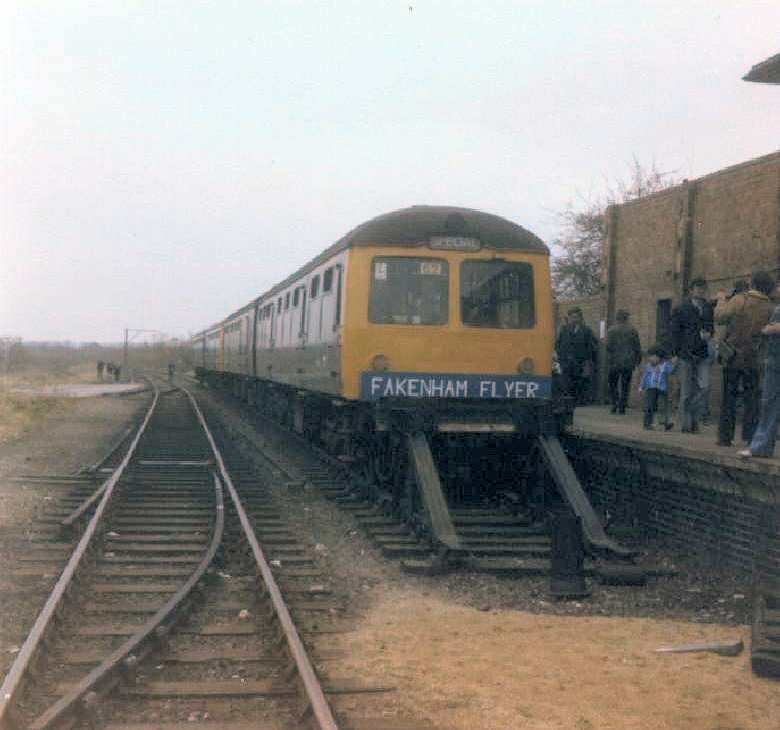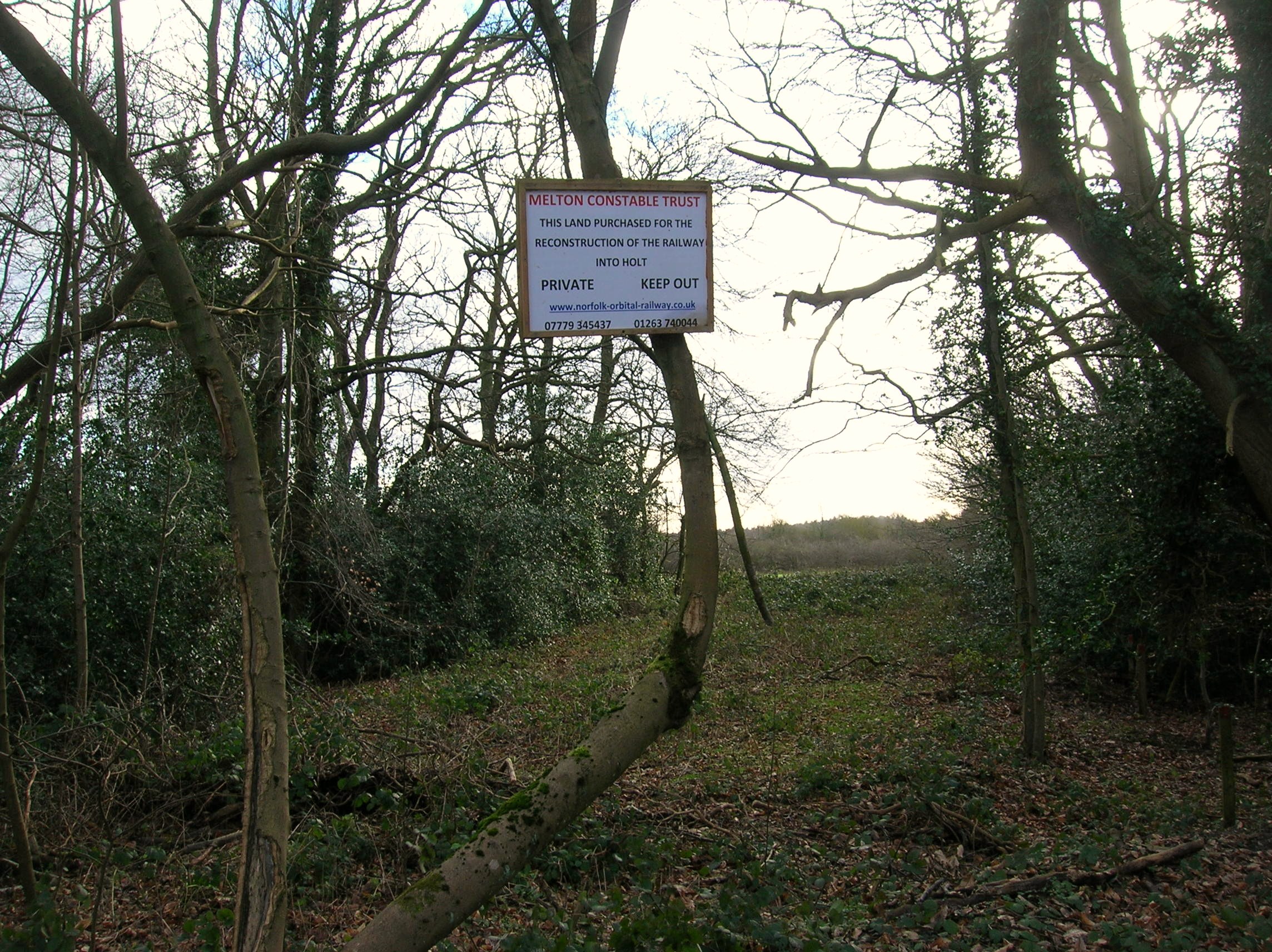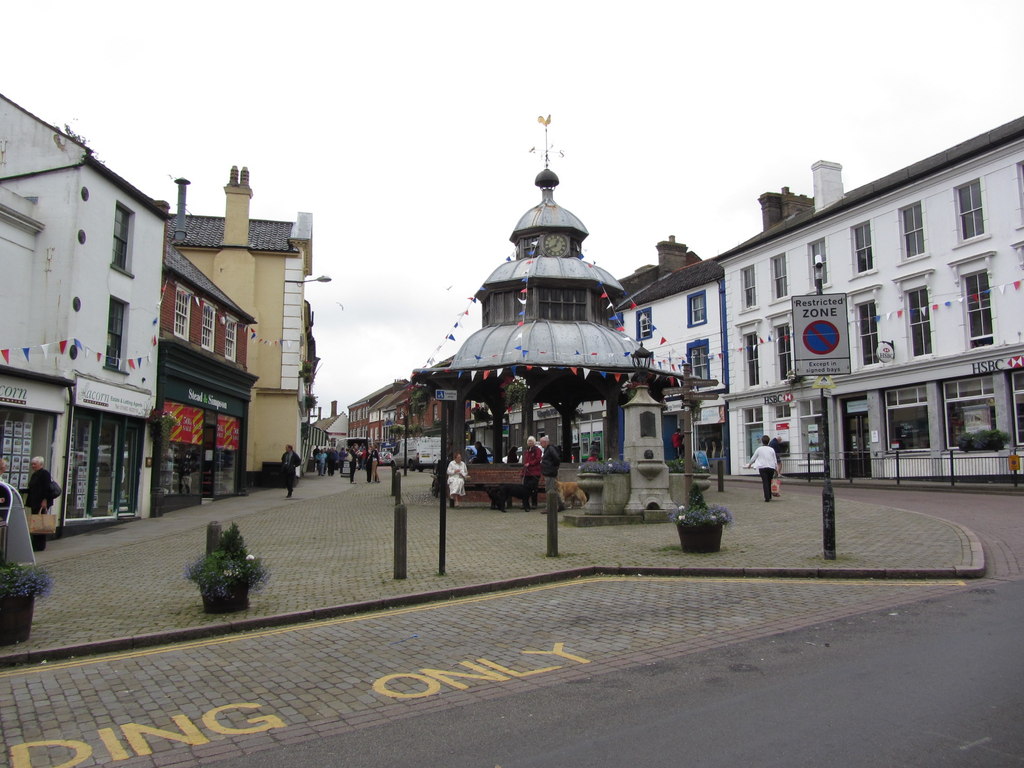|
Fakenham West Railway Station
Fakenham West railway station was a station in Norfolk. It was built as part of the Midland and Great Northern Joint Railway main line that meandered across Norfolk to Great Yarmouth. The station was opened by the Lynn and Fakenham Railway on 16 August 1880, when it was originally named ''Fakenham Town'', and was renamed ''Fakenham'' by 1910. Following railway nationalisation, it was renamed again to become ''Fakenham West'' by British Railways on 27 September 1948. The station was closed on 2 March 1959. Part of a platform from the station survives outside the car park of the Jewson builder's merchant, and the trackbed south of the platform is visible as a roadway. The town was served by two stations on separate lines. Fakenham East railway station was on the Great Eastern route between Wells-on-Sea and Wymondham. Currently there are no rail links to Fakenham; however, this may change in the future with the Norfolk Orbital Railway, which would use the proposed new-build sta ... [...More Info...] [...Related Items...] OR: [Wikipedia] [Google] [Baidu] |
Fakenham
Fakenham is a market town and civil parish in Norfolk, England. It is situated on the River Wensum, about north west of Norwich. The town is the junction of several local roads, including the A148 from King's Lynn to Cromer, the A1067 to Norwich and the A1065 to Swaffham. The civil parish has an area of and in the 2001 census had a population of 7,357 in 3,292 households, the population increasing to 7,617 at the 2011 census. For the purposes of local government, the parish falls within the district of North Norfolk.Office for National Statistics & Norfolk County Council (2001). Census population and household counts for unparished urban areas and all parishes'. Retrieved 2 December 2005. Fakenham has been a market town since 1250, particularly known for its corn, barley and wheat trading, and in the 19th century it became noted for its printing. Fakenham Racecourse is a thoroughbred horse racing venue to the south of Fakenham. The town has a long name of Fakenham Lancaster ... [...More Info...] [...Related Items...] OR: [Wikipedia] [Google] [Baidu] |
Wymondham
Wymondham ( ) is a market town and civil parishes in England, civil parish in the South Norfolk district of Norfolk, England, south-west of Norwich, England, Norwich off the A11 road (England), A11 road to London. The River Tiffey runs through. The parish, one of Norfolk's largest, includes rural areas to the north and south, with hamlets of Suton, Silfield, Spooner Row and Wattlefield. It had a population of 14,405 in 2011, of whom 13,587 lived in the town itself. Development The community developed during the Anglo-Saxon settlement of Britain, Anglo-Saxon period and expanded with the establishment of a Wymondham Abbey, priory in 1107 and a market in 1204. Industrially, Wymondham became known as a centre of woodturning and brush-making, retaining its brush factories until the late 20th century. New housing to the north and east of the town centre brought rapid expansion. Dual carriageways for the A11 and the development of rapid rail links to Norwich and Cambridge means Wymon ... [...More Info...] [...Related Items...] OR: [Wikipedia] [Google] [Baidu] |
Railway Stations In Great Britain Opened In 1880
Rail transport (also known as train transport) is a means of transport that transfers passengers and goods on wheeled vehicles running on rails, which are incorporated in tracks. In contrast to road transport, where the vehicles run on a prepared flat surface, rail vehicles (rolling stock) are directionally guided by the tracks on which they run. Tracks usually consist of steel rails, installed on sleepers (ties) set in ballast, on which the rolling stock, usually fitted with metal wheels, moves. Other variations are also possible, such as "slab track", in which the rails are fastened to a concrete foundation resting on a prepared subsurface. Rolling stock in a rail transport system generally encounters lower frictional resistance than rubber-tyred road vehicles, so passenger and freight cars (carriages and wagons) can be coupled into longer trains. The operation is carried out by a railway company, providing transport between train stations or freight customer facili ... [...More Info...] [...Related Items...] OR: [Wikipedia] [Google] [Baidu] |
Former Midland And Great Northern Joint Railway Stations
A former is an object, such as a template, gauge or cutting die, which is used to form something such as a boat's hull. Typically, a former gives shape to a structure that may have complex curvature. A former may become an integral part of the finished structure, as in an aircraft fuselage, or it may be removable, being using in the construction process and then discarded or re-used. Aircraft formers Formers are used in the construction of aircraft fuselage, of which a typical fuselage has a series from the nose to the empennage, typically perpendicular to the longitudinal axis of the aircraft. The primary purpose of formers is to establish the shape of the fuselage and reduce the column length of stringers to prevent instability. Formers are typically attached to longerons, which support the skin of the aircraft. The "former-and-longeron" technique (also called stations and stringers) was adopted from boat construction, and was typical of light aircraft built until the a ... [...More Info...] [...Related Items...] OR: [Wikipedia] [Google] [Baidu] |
List Of Closed Railway Stations In Norfolk
This is a list of closed railway stations in Norfolk, England. There are also a number of heritage railway stations in Norfolk, which have been re-opened by preservation societies. The companies listed are the pre-1923 groupings. Goods stations References {{Unreferenced, date=April 2008 See also *Railways in Norfolk Railways have played an important part in the history and development of the English county of Norfolk. It currently has thirty open National Rail stations, though there were once well over a hundred. Between 1959 and 1970 much of the network w ... Norfolk railway stations Rail transport in Norfolk Railway stations Norfolk ... [...More Info...] [...Related Items...] OR: [Wikipedia] [Google] [Baidu] |
Ryburgh Railway Station
Ryburgh railway station was a railway station in the village of Great Ryburgh in the English county of Norfolk. History The station opened in 1857, when the line between Dereham and Wells opened as part of the Norfolk Railway. The entire line, between Wymondham and Wells, became part of the Great Eastern Railway in 1862. The passenger service between Dereham and Wells ended on 5 October 1964, Tuddenham, 1965, page 87 although the line remained open for goods trains as far as Fakenham. The closure of the station was discussed in the House of Lords on 22 June 1964, with Lord Wise asking Lord Chesham what the government intended to do to address the tonnage of grain that the closure would put onto local roads. 1978 saw the formation of the Fakenham and Dereham Railway Society, a forerunner of the Mid-Norfolk Railway, which hoped to preserve the line between these two towns. A charter train ran as far as Fakenham in 1979, but the section of line between Ryburgh and Fak ... [...More Info...] [...Related Items...] OR: [Wikipedia] [Google] [Baidu] |
Thursford Railway Station
Thursford railway station was a station in Norfolk, England on the Midland and Great Northern Joint Railway line between Melton Constable and South Lynn. It was closed in 1959 along with the rest of the line. It served the settlement of Thursford, where Station Road remains as a reminder. References See also * List of closed railway stations in Norfolk This is a list of closed railway stations in Norfolk, England. There are also a number of heritage railway stations in Norfolk Norfolk () is a ceremonial and non-metropolitan county in East Anglia in England. It borders Lincolnshire to t ... {{coord, 52.8624, 0.9623, type:railwaystation_region:GB, display=title Disused railway stations in Norfolk Former Midland and Great Northern Joint Railway stations Railway stations in Great Britain opened in 1882 Railway stations in Great Britain closed in 1959 ... [...More Info...] [...Related Items...] OR: [Wikipedia] [Google] [Baidu] |
Raynham Park Railway Station
Raynham Park railway station was a station in Norfolk, England. It was opened in the 19th century as part of the Midland and Great Northern Joint Railway main line from the Midlands to Great Yarmouth. It closed in 1959 along with the rest of the line. History The station lay approximately half a mile from the small hamlets of Tatterford and Helhoughton but took its name from the Raynham Hall residence of Lord Townshend Marquess Townshend is a title in the Peerage of Great Britain held by the Townshend family of Raynham Hall in Norfolk. The title was created in 1787 for George Townshend, 1st Marquess Townshend, George Townshend, 4th Viscount Townshend. Histor ..., erstwhile chairman of the Lynn & Fakenham Railway, some 1.5 miles away. Present day The station buildings survive as a private residence. The present owners have added an old carriage on rails at the former station platform.Vaughan, A., p. 24. References Disused railway stations in Norfolk For ... [...More Info...] [...Related Items...] OR: [Wikipedia] [Google] [Baidu] |
Norfolk Orbital Railway
The Norfolk Orbital Railway — as the Holt, Melton Constable and Fakenham Railway Company — is a proposed rail project in Norfolk, England, which is proposed to look at bringing a new rail connection to North and Mid Norfolk. The proposed line would link stations at Sheringham and Wymondham on the national rail network by using tracks of the two standard gauge heritage railways in the county, and restoring the former Midland and Great Northern Joint Railway line between Holt and Fakenham, creating a circular route that could be used by passenger services. The heritage lines affected are Mid-Norfolk Railway and the North Norfolk Railway, with the route including stations on both of these lines as well as on part of National Rail network and on a disused section between County School and Holt. These are both 2 entirely separate enterprises. History The line from Fakenham to Melton Constable was built by the Lynn and Fakenham Railway, later the Midland and Great N ... [...More Info...] [...Related Items...] OR: [Wikipedia] [Google] [Baidu] |
Wells-on-Sea
Wells-next-the-Sea is a port town on the north coast of Norfolk, England. The civil parish has an area of and in 2001 had a population of 2,451,Office for National Statistics & Norfolk County Council (2001). Census population and household counts for unparished urban areas and all parishes''. Retrieved 2 December 2005. reducing to 2,165 at the 2011 census. Wells is to the east of the resort of Hunstanton, 20 miles (32 km) to the west of Cromer, and 10 miles (16 km) north of Fakenham. The city of Norwich lies 32 miles (51 km) to the south-east. Nearby villages include Blakeney, Burnham Market, Burnham Thorpe, Holkham and Walsingham.Ordnance Survey (2002). ''OS Explorer Map 251 – Norfolk Coast Central''. . Origin of name The name is ''Guella'' in the Domesday Book of 1086 (half gallicised, half Latinised from Anglian ''Wella'', a spring). This derives from spring wells of which Wells used to have many, rising through the chalk of th ... [...More Info...] [...Related Items...] OR: [Wikipedia] [Google] [Baidu] |
North Norfolk
North Norfolk is a local government district in Norfolk, England. Its council is based in Cromer. The population at the 2011 Census was 101,149. History The district was formed on 1 April 1974, under the Local Government Act 1972. It was a merger of Cromer Urban District, North Walsham Urban District, Sheringham Urban District, Wells-next-the-Sea Urban District, Erpingham Rural District, Smallburgh Rural District, and Walsingham Rural District. The district was originally to be called Pastonacres, but changed its name by resolution of the council and permission of the Secretary of State for Environment before it formally came into existence on 1 April 1974. Politics Elections to the district council are held every four years, with all of the seats on the council up for election every fourth year. The council was run by a Conservative administration, the Conservative party having gained a majority of 8 seats at the 2011 elections, which they increased to 18 at the 20 ... [...More Info...] [...Related Items...] OR: [Wikipedia] [Google] [Baidu] |







